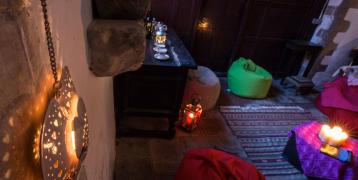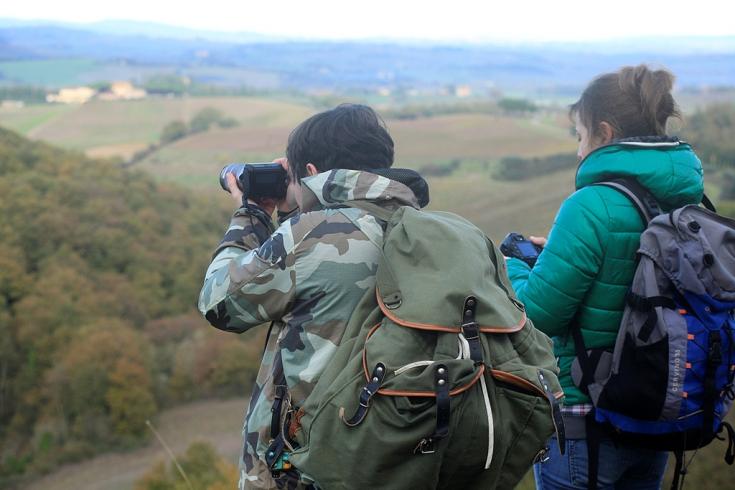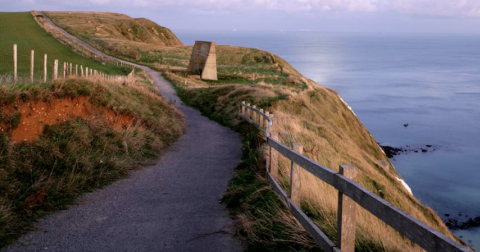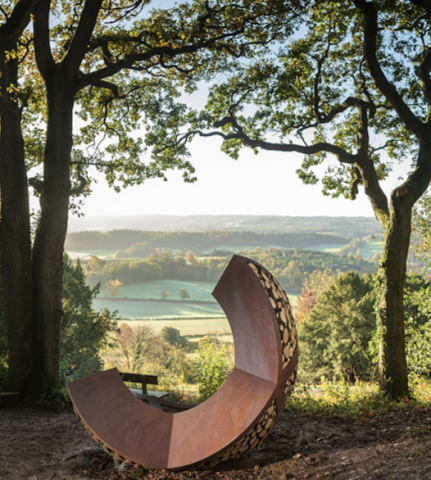North Downs Way pilgrim trail
The concept of walking as a leisure activity dates back to 19th century Romantic artists seeking refuge and inspiration in nature. With rising pollution and booming population, more and more people were looking to escape cities, heading out to the countryside.
During that period, the first hiking clubs were established in different parts of Europe – in Norway, the UK or Germany. Hiking was gaining popularity and long-distance trails were built in the 20th century. Many of them were formed on the remains of pilgrim trails, typically hundreds of years old.
The interest in walking has been growing in recent years and has increased even more with the covid pandemic and numerous lockdowns. UNWTO sees walking tourism as “one of the most popular ways to experience a destination”.
Walkers are also usually more environmentally conscious and interested in really immersing themselves in local heritage and culture. More specifically, pilgrim trails are popular destinations and have been recognized as “one of the fastest growing segments of the travel industry, with more than 300 million pilgrims every year”. Ancient pilgrim routes such as The Way of St James to Santiago de Compostela in Spain report an annual 10% increase in numbers.
Because pilgrim trails are an important part of cultural and natural heritage, they need to be managed sustainably. The Green Pilgrimage project shows how protection of cultural and natural heritage can be combined with economic development along the trails. An example of such management is the North Downs Way National Trail, where a strategy has been developed because of the involvement in the Green Pilgrimage project.
Connection to the past
The North Downs Way National Trail is one of sixteen National Trails showcasing Britain’s most beautiful landscapes. The trail was established in 1978 and follows a pilgrim route dating back to the Middle Ages. Pilgrims would originally travel from Canterbury to Winchester to pray to St Swithun, who was buried at the cathedral.
The route was then used in the opposite direction, as pilgrims journeyed from Winchester to the world heritage site around Canterbury Cathedral to pray at the shrine of Thomas Becket. Because of that, many churches and religious heritage sites can be found along the trail.
There are eight castles, three cathedrals, three archbishop palaces and numerous stately homes and gardens to be explored. The North Downs Way National Trail is also a part of the Via Francigena Pilgrim Route, which starts at the Canterbury Cathedral and ends in Rome.
The area is remarkable from a geological perspective, as the trail follows the top of a chalk ridge, passing through diverse landscapes and two Areas of Outstanding Natural Beauty, the Surrey Hills and the Kent Downs. Catherine Bradley, European and Project Development Manager at the Kent Downs Area of Outstanding Natural Beauty (AONB) elaborated:
“I think people like to walk on a route that has time depth, to know people have walked this for hundreds of years and they are somehow part of that history. Just like people are drawn to historic buildings, this is a natural way to access history.”
This nationally important, 246 km long trail hasn’t always had a proper strategy. Inspired by the management of the St James Way in Spain and Norwegian St Olav Ways, Kent County Council decided that a dedicated policy should be developed for the North Downs Way National Trail.
The interest in pilgrimage has been gradually growing: “The number of people visiting trails has grown by 400% in many areas of Kent, because of the covid pandemic. More people feel the need for tranquillity in nature and are looking for activities outside,” explains Bradley.
The perception of green spaces has changed in recent years. “The fact that there is much more importance given to green spaces at the national and European level was definitely helpful in developing the new strategy,” says Bradley. “However, more people are taking pilgrimage not for religious reasons, but as a physical challenge and to achieve something significant.”
Modern Pilgrimage and Sustainable Tourism
The new strategy’s focus is to promote and support pilgrimage and long-distance walking, while increasing business engagement. "We are making sure that businesses around the trail have enough information and sufficient knowledge about the trail,” says Bradley.
Sustainable tourism and environmental protection are important aspects of the strategy. National Trails receive more funding and their protection is encouraged.
Digital tools are now available for local businesses and visitors, who can make a digital daily itinerary of their trips, connect with others, or see what services and sites there are along the way on an interactive map.
Many improvements were made to the Trail thanks to the Green Pilgrimage Pilot Actions funding. Pilgrims and visitors can turn to North Downs Way Ambassadors, volunteers who are available to show visitors in detail the cultural and natural heritage along the way.
The volunteers are knowledgeable about the North Downs Way trail, as well as landscape heritage and biodiversity, and are trained to welcome visitors, lead walks, inform about health and safety, as well as having access to useful materials and resources via a dedicated web portal.
There are many interesting initiatives to keep the visitors engaged. Each of the ten breweries featured on a special “Ale of the Trail” route make a dedicated beer, connected to the trail and local heritage, either in name, ingredients, or through historical links. Apart from beer tasting, tourists can explore art sculptures placed along the trail or give “champing”, a unique church camping experience, a try.
The trail brings revenue to local businesses. When developing the strategy, AONB consulted as many businesses as they could and many regional and local partnerships with municipalities and organisations along the trail were established.
To improve management, people counters were installed many as part of the Green Pilgrimage project pilot action.
“These counters enable us to collect data on the number of cyclists and walkers and to see which areas are most visited and which need more management and different marketing,” explains Bradley.
Improvements and additions are made constantly. “We plan to add more counters, run another round of business consultation, add more art sculptures and put more businesses on the interactive map. We are also building a digital directory to access the ambassadors and producing a short film about the trail,” he adds.
For municipalities interested in developing a strategy for their trails and pilgrim routes, Catherine Bradley has the following advice: “Read all the documents on the green pilgrimage project website, the action plans and information on other trails in Europe. Share the knowledge across nations, but also with other regions in your country”.
“Some think that pilgrimage is primarily a religious activity, but this is increasingly untrue with more and more people coming for a variety of reasons linked to nature and adventure. These trails are for everyone, people want to be connected to nature and be part of something special and that is what the pilgrim trails can offer,” concludes Bradley.
For more inspiration, read about the related good practices or check out the resources below:
- Read more about North Downs Way
- Watch a video 'Exploring The North Downs Way with Rob Bell'
- Explore resources for volunteers
Related good practices





